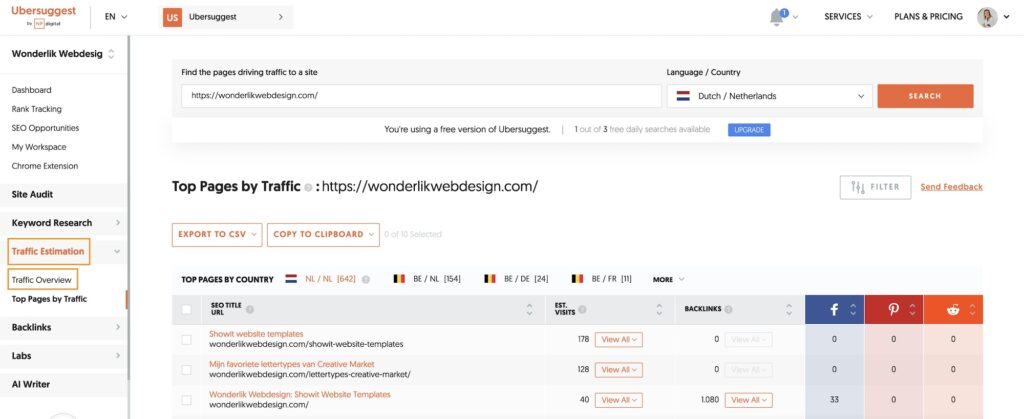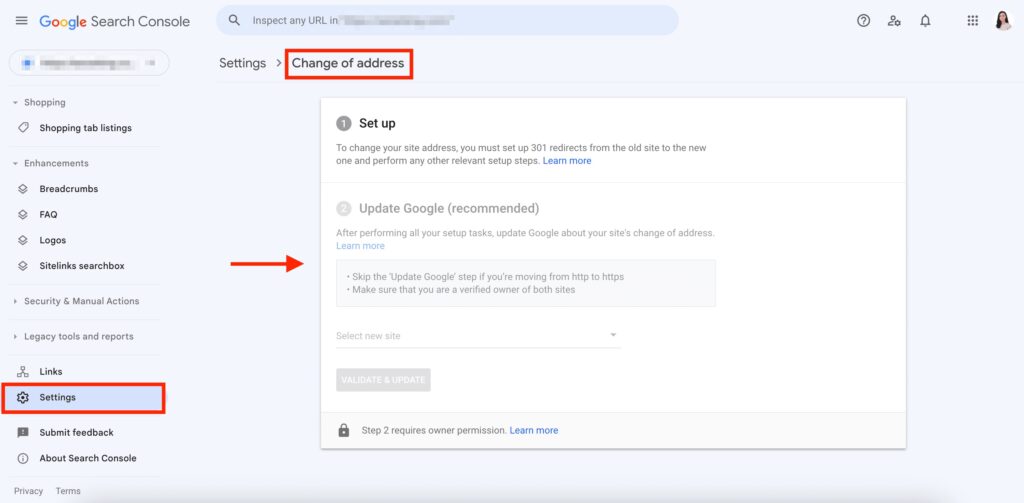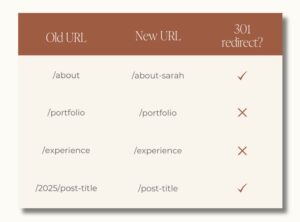Creating a new website can be intimidating, let alone changing platforms (e.g., from WordPress to Showit). A frequent worry I hear from clients is about SEO (Search Engine Optimization): what’s going to happen to your well-ranked pages on Google when you move to Showit? Will your rankings drop, resulting in fewer visitors? You’ve put in a lot of effort to climb the Google rankings, and losing that would be a bummer.
Switching platforms (whether it’s Showit, Wix, or any other) might cause a temporary dip in search results, but with these 10 tips, you’ll quickly get your SEO back on track!
1. Before moving to Showit: analyze your current website
Preparation is key! Always analyze your site before moving to Showit: which pages are performing well on Google? Which keywords are driving traffic to these pages? You can easily check this with the free online tool Ubersuggest.
Create a free account and head to Traffic Estimation > Top Pages by Traffic. Enter your website’s URL here. You’ll get a snapshot of the pages generating the most traffic from Google:

Now that we’ve pinpointed which pages are bringing in the most visitors, it’s essential to uncover the keywords that are guiding people to those pages. Just hit ‘View All’, and you’ll get a clear rundown of the keywords that are drawing people to your site.

Focus on maintaining the pages with the highest traffic. It’s key to keep them alive when you’re crafting your new Showit website!
2. Keep your domain (if possible)
You really want to hang on to your current domain name if you can. Changing it without a good reason makes Google view it as an entirely new site, meaning you’d have to rebuild your ranking from scratch.
If you have to change your domain due to a rebrand, remember to:
- Redirect your old domain and every URL to the new one using 301 redirects (check out tip 4 for more on that).
- Notify Google of your domain change through the ‘Change of Address’ tool in Google Search Console. This tells Google your site has moved to a new domain name.

3. Try to keep your page names & URLs the same
A common slip-up when crafting a new website is overlooking those URLs! When you tweak page names, the slugs (the part after your domain name, like /about or /portfolio) often change too. This can lead people to a dreaded 404 page if they visit using the old URL, which isn’t great for your SEO or user experience.
Imagine your old page was named ‘About me’ (/about-me) and you change it to ‘About Sarah’ (/about-sarah). Visitors who enter the old URL will land on a 404 error page because the old page no longer exists. Google won’t be able to find this page either, which can negatively impact your SEO. You don’t want that, right? So, here’s a tip: keep those page names and URLs as consistent as possible!
4. Redirect old pages to new pages using 301 redirects
If you do decide to change your page names, make sure to use 301 redirects. A 301 redirect permanently redirects users from an old page to a new one (and its URL). This way, they won’t hit those annoying 404 error pages when entering the old URL in their browser. Instead, they will end up on the redirected (new) page. Check out this guide on setting up 301 redirects in Showit.
A 301 redirect also tells Google that the new page has taken over the old one’s spot. The SEO value from the original page largely transfers to the new one, helping you keep that cherished search ranking intact.

Wondering if you need 301 redirects? Keep an organized list of all your old and new URLs for a smooth transition. Here’s an example of what that could look like:
If your website is large, jotting down every URL manually isn’t feasible. Instead, try using a tool like Screaming Frog SEO Spider for a quick snapshot of all your site’s pages!
5. Design a strategic 404-page
you can’t always dodge those pesky URL hiccups! Almost every site has them. That’s why it’s smart to whip up a visually attractive and informative 404 page. Let your visitors know that the page they’re seeking has moved on, and warmly direct them to other awesome parts of your site.

404-page from the Showit template Silk Skye
6. Keep on-page SEO when moving to Showit
Try to hold on to on-page SEO goodness for your high-traffic pages. Here’s what you want to keep an eye on:
- Meta titles and descriptions that pop up in Google search results.

- Heading tags in your website copy (h1, h2, h3, …)
- Alt-tags for images for better accessibility and SEO.
- Internal and external links (check out tip 7 for why they matter!)
- …
As you’re crafting your new Showit site, be sure to give those on-page SEO elements a freshening up. Want to learn more about optimizing your Showit site for SEO?
OPTIMIZE YOUR SHOWIT SITE FOR SEO7. Don’t forget about links!
When you’re moving website copy from your old website to your new Showit site, it’s easy to forget about moving those crucial links. And that’s such a bummer, because they play a huge factor in your SEO ranking!
Make sure you keep both internal links (links to your own site) and external links (links to other websites) in your website copy on your new Showit website. And most importantly: ensure those internal links are pointing to your new pages instead of the old ones to avoid 404 errors! This simple move keeps your site SEO-friendly and makes it super easy for your visitors to navigate around.
8. Test your Showit website before launching!
Obviously, this is a no-brainer. Test all the links and buttons, check how your site looks on mobile, and make sure everything’s running smoothly before going live.
Great news: if you grab one of my Showit website templates, you’ll get a detailed launch checklist to ensure a smooth launch for your Showit site!
9. Add your new sitemap to Google Search Console
After launching your Showit website, make sure to submit your new sitemap to Google Search Console. Think of a sitemap as a roadmap of your website that shows all its pages. By adding this to Google Search Console, you’re giving Google a heads-up about the fresh updates on your site.
READ THE BLOG10. Launched your new Showit site? Keep up the SEO work!
SEO is a marathon, not a sprint, and the work doesn’t stop when your shiny Showit website goes live.
Keep an eye on your page rankings and make sure your Showit website stays up-to-date. A great way to do this is by blogging regularly. Search engines love sites with fresh, updated content – plus you’ll position yourself as an expert, earning more trust with your visitors. Win-win!
Ever wondered what tools I rely on daily to keep my website, marketing and workflow running smoothly? I've put together a list just for you so you can spend more time doing what you truly love!
My favorite tools & resources for creatives
Read more ...
